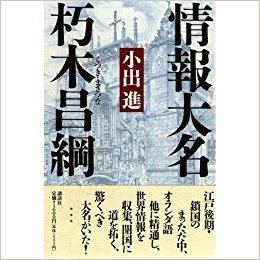Name Kutsuki Masatsuna | Died 1802 | |
 | ||
Kutsuki Masatsuna (朽木 昌綱, March 5, 1750 – May 18, 1802), also known as Kutsuki Oki-no kami Minamoto-no Masatsuna, was a hereditary Japanese daimyō of Oki and Ōmi with holdings in Tanba and Fukuchiyama. His warrior clan was amongst the hereditary vassals of the Tokugawa family (the fudai) in the Edo period
Contents
Masatsuna was a polymath and a keen student of whatever information was available at that time concerning the West. Since most printed material was only available in the Dutch language, such studies were commonly called "Dutch learning" (rangaku).
Dutch Japanologist Isaac Titsingh considered Masatsuna to have been his closest friend while he was in Japan, and their correspondence continued after Titsingh last left Dejima for the last time. The oldest surviving letter from Masatsuna to Titsingh dates from 1789; and this letter mentions mutual friends such as Shimazu Shigehide (the father-in-law of the eleventh shogun, Tokugawa Ienari) and Kuze Hirotami (Nagasaki bugyō or governor of Nagasaki port).
Masatsuna and Titsingh shared an interest in numismatics. After Titsingh was reassigned from Japan in 1784, he sent packages of coins from India—Dutch coppers, as well as coins from India, Russia, Turkey, and Africa. Titsingh in turn received Japanese and Chinese coins as gifts.
Masatsuna was an author of several treatises on numismatics. He was the first in Japan to circulate a book about non-Japanese coins with impressions taken from actual coins which had been obtained from Western traders.
Masatsuna's collection of coins was brought to the UK in the 19th century, and is now in the British Museum and the Ashmolean Museum.
Events of the daimyō's life
Selected work
Kutsuki's published writings encompass 8 works in 12 publications in 1 language and 25 library holdings.
